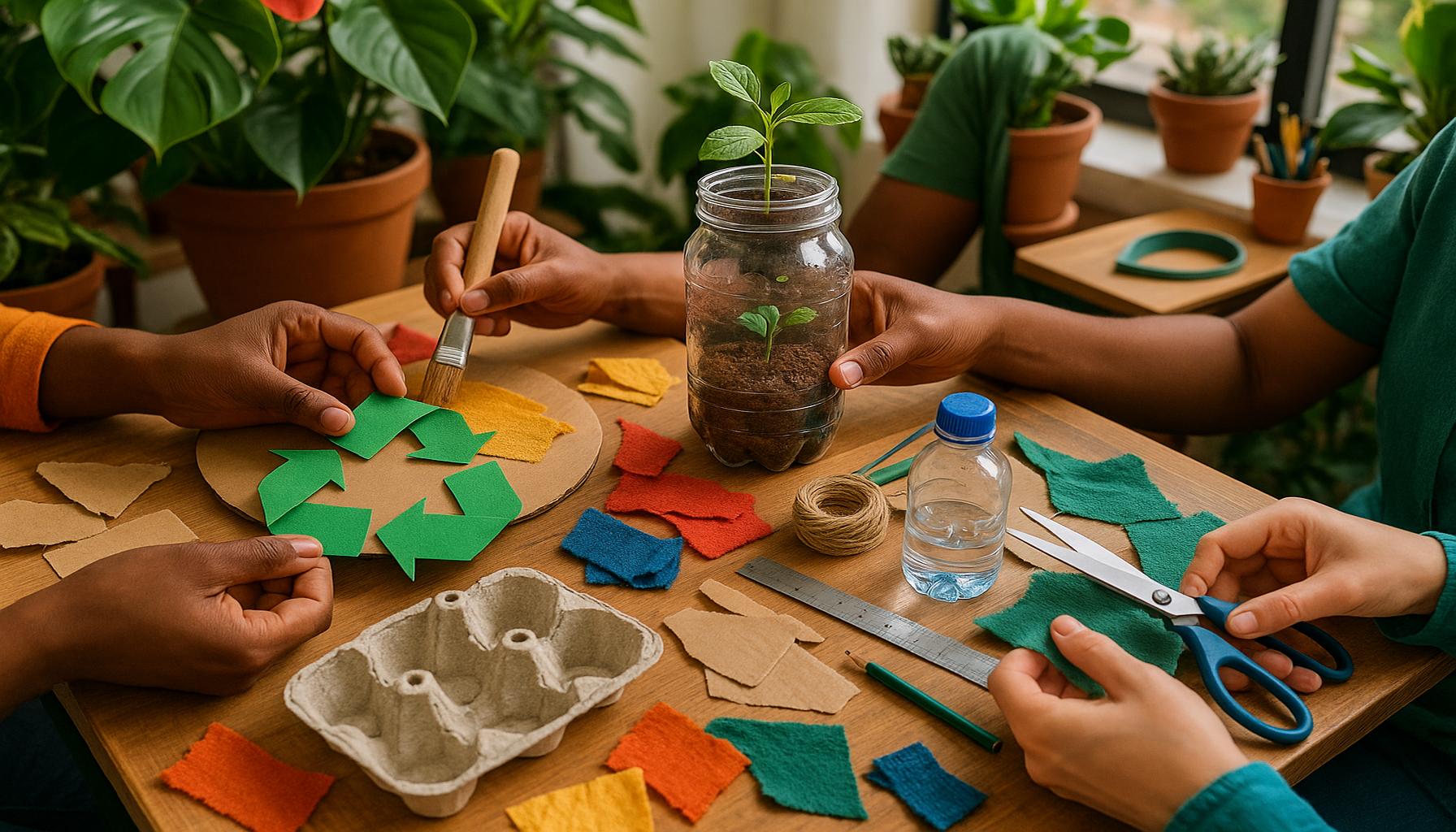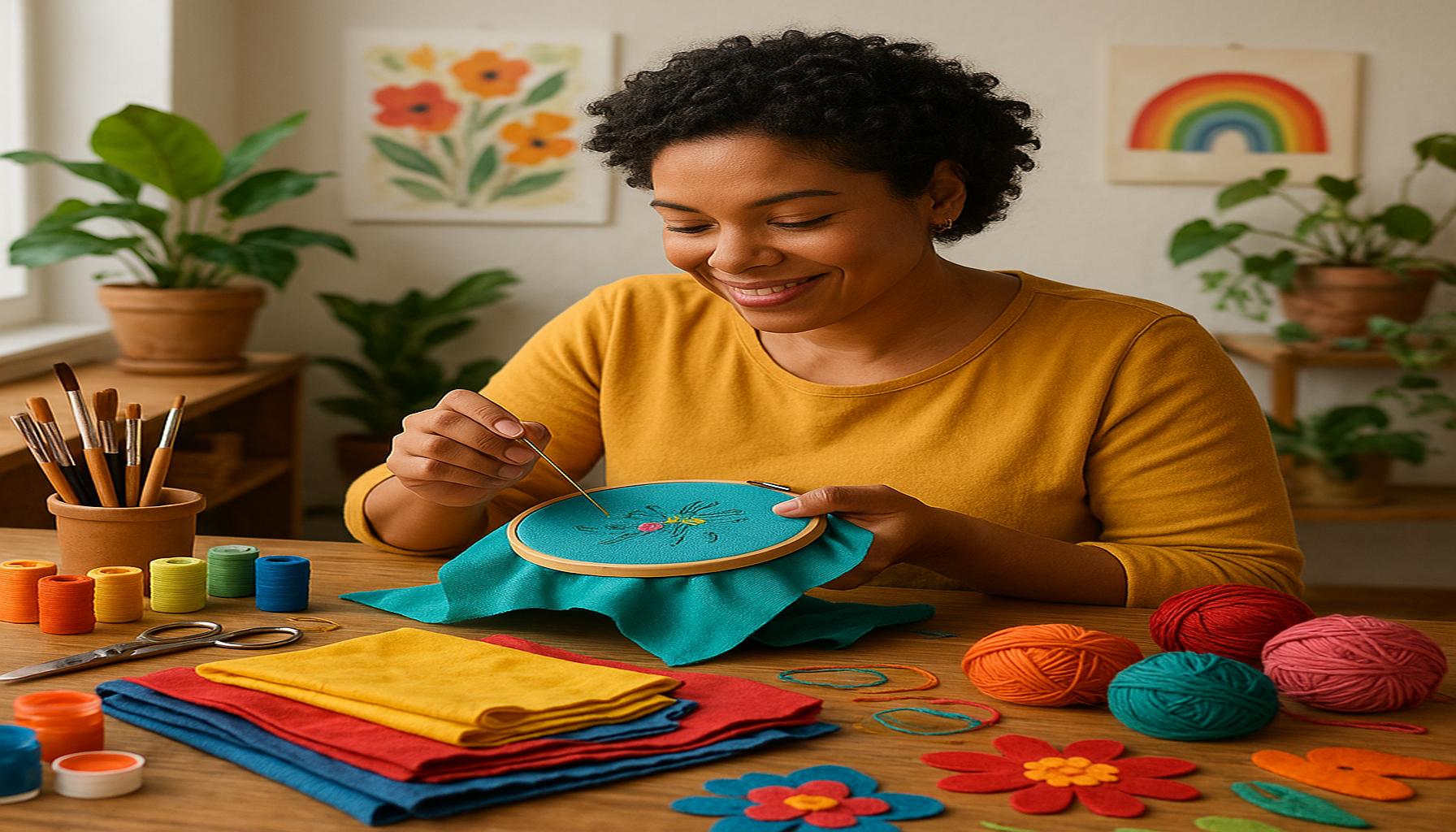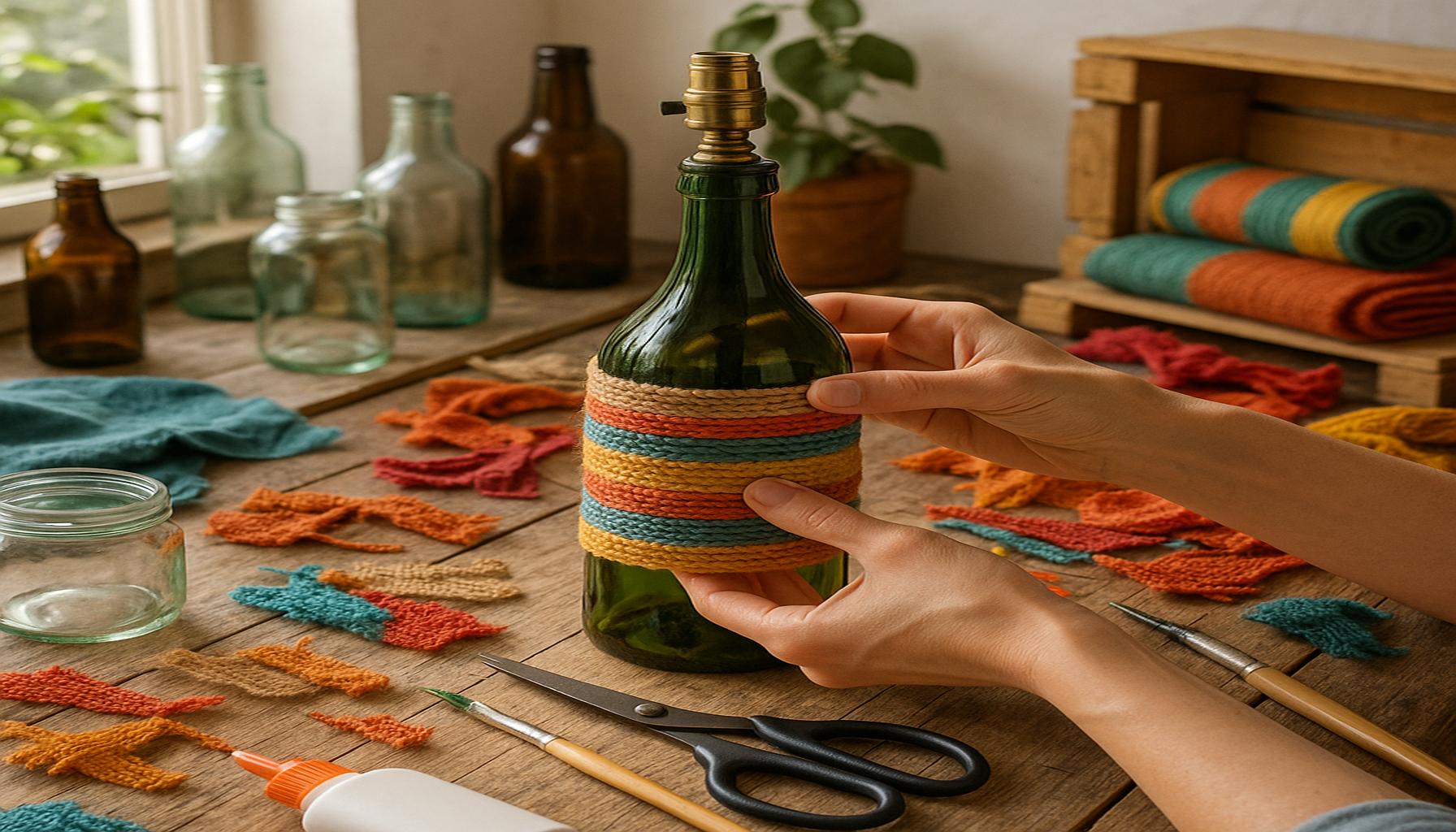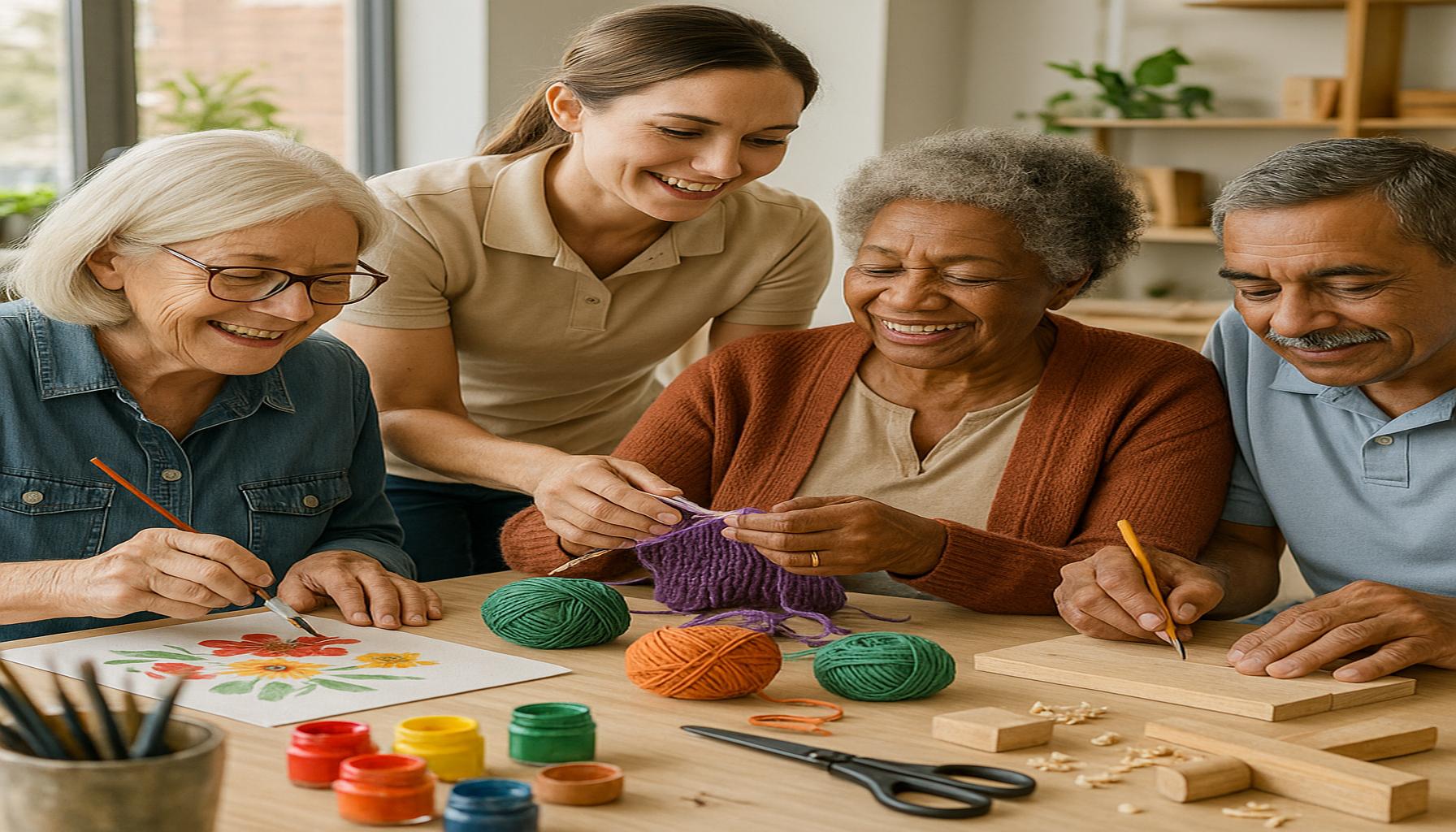How Crafting Can Promote Sustainability and Recycling

Unleashing the Power of Creativity
Crafting is more than just a pastime; it has the potential to serve as a profound tool for sustainability and recycling. As consumers become increasingly aware of their environmental impact, many are turning to crafting to create, repurpose, and cherish materials that might otherwise end up in landfills. This grassroots movement not only enhances creativity but also cultivates a culture deeply rooted in sustainability.
The benefits of crafting as a means to promote sustainability are evident in various aspects of daily life. Consider the following ways crafting can contribute to these crucial goals:
- Repurposing materials: Old clothing, scrap paper, and discarded items can be transformed into art, home decor, or functional objects. For example, a torn T-shirt can be repurposed into a reusable shopping bag, dramatically reducing plastic waste. Similarly, empty glass jars can find new life as candle holders or plant pots, effectively minimizing waste.
- Reducing waste: Crafting prioritizes the use of leftover materials, helping to minimize the volume of waste generated. By using what is readily available, crafters can contribute to the reduction of the carbon footprint associated with producing new goods. Every scrap of fabric, every piece of paper, and every unwanted item can provide the canvas for creativity.
- Environmental education: Engaging in crafts can raise awareness about the importance of recycling and sustainable practices. Workshops and classes that focus on crafting with recycled materials often include discussions on the environmental impact of waste, providing participants with valuable insights into making more sustainable choices in their everyday lives.
In the United States, initiatives promoting crafting for sustainability are on the rise. Local workshops and online communities are emerging, encouraging people to share ideas and techniques. For instance, platforms like Instagram and Pinterest have become hubs for showcasing DIY projects that advocate for recycling and sustainability, allowing users to see how others are creatively reimagining waste materials. This exchange of ideas not only fosters creativity but also builds a sense of community dedicated to making a positive environmental impact.
Moreover, organizations like the “Craft for a Cause” initiative engage crafters to create items for donation, such as quilts for the homeless or toys for children in need, further embedding the values of community service and sustainability. Such movements not only cultivate individual creativity but also link crafting with broader societal goals, highlighting its potential as an agent for change.
As we delve deeper into the world of crafting, we uncover an array of innovative methods and inspiring stories that illustrate how every single craft project can contribute to our planet’s health. From intricate jewelry made from recycled materials to upcycled furniture, the possibilities are endless. Join us in exploring the transformative potential of crafting as a powerful ally in the fight for sustainability and a greener future.

DON’T MISS: Click here to enhance your communication skills
Transforming Waste into Wonder
In a world increasingly dominated by a throwaway culture, the art of crafting provides a refreshing antidote. Crafting not only encourages creativity but also lays the groundwork for a more sustainable future by transforming waste into valuable resources. By adopting the mindset of a maker, individuals can engage in a practice that prioritizes repurposing and upcycling, thus reducing their overall environmental footprint.
The trend of using discarded materials for crafting reflects a shift in consumer behaviors across the United States. More people are realizing the significance of a circular economy, where products are designed to be reused, repaired, and recycled rather than disposed of. This awareness fosters a mentality where items such as old newspapers, broken furniture, and outgrown clothing are no longer viewed as trash but instead as potential treasures for crafting endeavors.
One prominent approach within this movement is the idea of upcycling—the process of transforming waste materials into new products of higher quality or value. This concept has gained traction not only among individual crafters but also within businesses looking to embrace sustainable practices. For example, companies are now producing lines of products made from recycled plastics or reclaimed wood, showcasing that sustainability can indeed go hand in hand with profitability.
Here are a few notable examples of how crafting can effectively promote sustainability and recycling:
- Creative Home Decor: Sourcing materials from thrift stores or salvage yards can lead to unique home decor items. For instance, turning vintage suitcases into stylish side tables or using reclaimed wood to create beautiful shelves helps reduce the demand for new materials.
- Fashion Revolution: The rise of DIY clothing hacks inspires many to mend rather than discard. Simple techniques like tie-dying a faded shirt or adding patches to jeans extend the life of garments while making a fashion statement against fast fashion.
- Art with a Message: Artists around the country are using trash as their canvas—transforming ocean debris into striking sculptures and making political statements about pollution. These art pieces serve as both creative expressions and powerful reminders of the environmental crisis.
Beyond individual creative pursuits, crafting can also be a community affair. Local craft fairs and workshops address the growing interest in sustainability by providing classes focused on upcycling or eco-friendly techniques. These gatherings cultivate a sense of community and solidarity as participants collaborate, share knowledge, and work together towards a common goal of environmental stewardship.
The combination of crafting and sustainability offers an inspiring vision of what is possible when creativity meets environmental consciousness. As we explore deeper into the realm of DIY and crafting, it becomes increasingly evident that each project has the power to make a positive contribution to our planet. From creating something beautiful out of the ordinary to affirming the principle of waste reduction, crafting might just be the creative revolution we need for a sustainable future.
| Category | Description |
|---|---|
| Eco-friendly Materials | Utilizing recycled items like paper, fabric scraps, and plastic waste in crafting helps reduce landfill waste. |
| Awareness and Education | Crafting workshops teach individuals about the importance of sustainability, influencing community behavior towards recycling. |
Incorporating eco-friendly materials in craft projects promotes a cycle of sustainability by transforming what would otherwise be discarded into beautiful and functional items. For example, using fabric scraps to create one-of-a-kind quilts not only reduces waste but also cherishes creativity. This practice teaches crafters about resourcefulness while generating a tangible impact on waste reduction.Moreover, crafting can serve as a powerful educational tool. By organizing workshops that focus on sustainable crafting practices, communities can nurture a culture of awareness and responsibility. Such initiatives inspire participants to adopt sustainable habits and advocate for recycling within their social circles. Through creativity, individuals become ambassadors for positive environmental change, potentially sparking a ripple effect towards greater sustainability in society. Encouraging crafting with a purpose not only fosters creativity, but it also builds a community that values our planet and its resources. As each individual makes conscious choices in their crafting journey, the collective impact echoes far beyond the workshop tables.
EXPLORE MORE: Click here to learn about the benefits of gardening for your mental health
Community Crafting: Building Connections Through Sustainability
In addition to individual creations, crafting plays a vital role at the community level, bringing together like-minded individuals who share a passion for sustainability and recycling. Community crafting not only fosters a sense of belonging but also serves as an educational platform that empowers people to take actionable steps towards reducing waste. Workshops and local crafting circles aimed at environmental stewardship focus on teaching techniques that transform everyday items into eco-friendly masterpieces.
The popularity of maker fairs across the United States exemplifies this connection between crafting and sustainability. These events celebrate creativity and innovation, while often featuring booths dedicated to upcycling and environmentally conscious projects. By showcasing local artisans and crafters who prioritize sustainable materials, these fairs provide attendees with inspiration and tangible examples of how crafting can alter perceptions about waste.
Community Art Projects have also emerged as a compelling way to highlight pressing environmental issues. Initiatives such as “Trash the Runway” encourage participants to create fashion statements from recycled materials. This hands-on experience teaches participants, especially younger generations, about environmental responsibility and creative problem-solving. Moreover, when finished, these art installations capture the attention of the public, prompting discussions about sustainability in a visually impactful manner.
Cooperative crafting spaces, known as makerspaces, offer another outlet for communal creativity focused on sustainability. These shared environments typically provide access to tools and resources that individuals might not otherwise have at home. From sewing machines to woodworking equipment, makerspaces empower community members to embark on ambitious crafting projects with sustainability in mind. Some makerspaces even host regular classes on how to repurpose specific materials, guiding members in their journey toward more sustainable crafting practices.
Moreover, the cultural significance of crafting in American history cannot be overlooked. Traditional crafts, such as quilting and canning, are deeply rooted in production cycles that emphasize resourcefulness. Reviving and adapting these age-old practices can serve as a bridge to a more sustainable lifestyle, highlighting the importance of knowing where materials come from and how they can be reused. For instance, a community quilting bee not only results in the creation of beautiful quilts but also encourages participants to discuss fabric conservation strategies and dye techniques, fostering both creativity and environmental consciousness.
Statistics from the Green Craft Network indicate that community involvement in crafting can lead to substantial reductions in waste. Active participation in crafting workshops can decrease reliance on fast fashion and disposable goods, as individuals learn to value quality craftsmanship over mass production. Furthermore, strong community ties formed in these crafting spaces can inspire local markets to support sustainable businesses, thus creating a ripple effect of demand for eco-friendly products.
As cities and towns across the United States embrace crafting as a medium for sustainable change, it’s clear that the vibrant threads of creativity and community are intertwined. By engaging together in crafting endeavors, communities can work toward a future that emphasizes both resourcefulness and sustainability, demonstrating that creativity can indeed serve a greater purpose in the fight against wastefulness.
DIVE DEEPER: Click here to discover more
Final Thoughts on Crafting’s Role in Sustainability
As we navigate the challenges of a rapidly changing environment, the role of crafting in promoting sustainability and recycling has never been more critical. Crafting empowers individuals and communities alike to rethink their relationship with materials, fostering a culture of conservation and creativity. By repurposing discarded items and celebrating the artistry of handmade goods, crafting transforms waste into valuable resources, reflecting a powerful statement against consumerism.
The connection between crafting and sustainable practices not only cultivates personal creativity but also strengthens community bonds. From workshops to local maker fairs, shared crafting experiences enable participants to learn collectively and inspire one another. They serve as hubs for innovation, showcasing the myriad ways in which we can reduce our ecological footprint through creativity. Statistics from initiatives such as the Green Craft Network demonstrate that these community-driven efforts can lead to significant waste reduction, highlighting crafting as a formidable player in the movement toward a more sustainable future.
As we continue to embrace and promote crafting as a valuable tool for environmental stewardship, let us also encourage future generations to engage in these practices. By instilling a sense of responsibility and creativity through crafting, we lay the groundwork for a more sustainable society. Every small step taken in classrooms, makerspaces, and kitchens can collectively lead to substantial changes in our world. Ultimately, crafting not only nurtures our creative spirit but also contributes to the healing of our planet, reminding us that sustainability starts with each of us.


